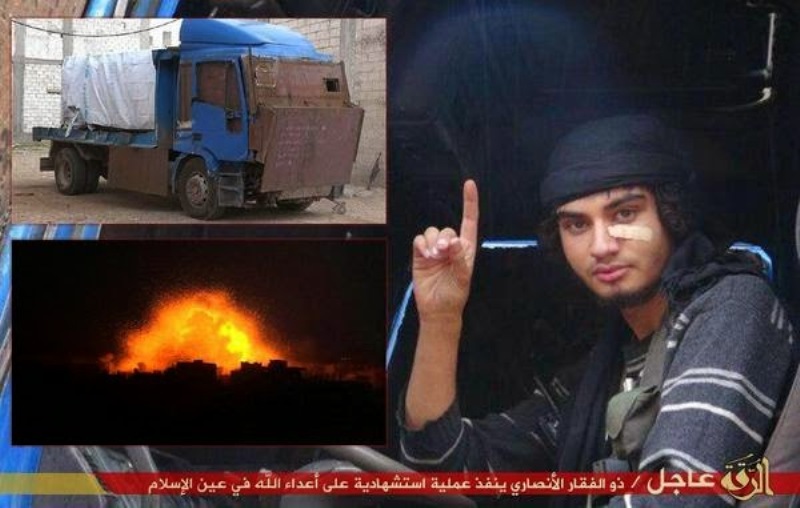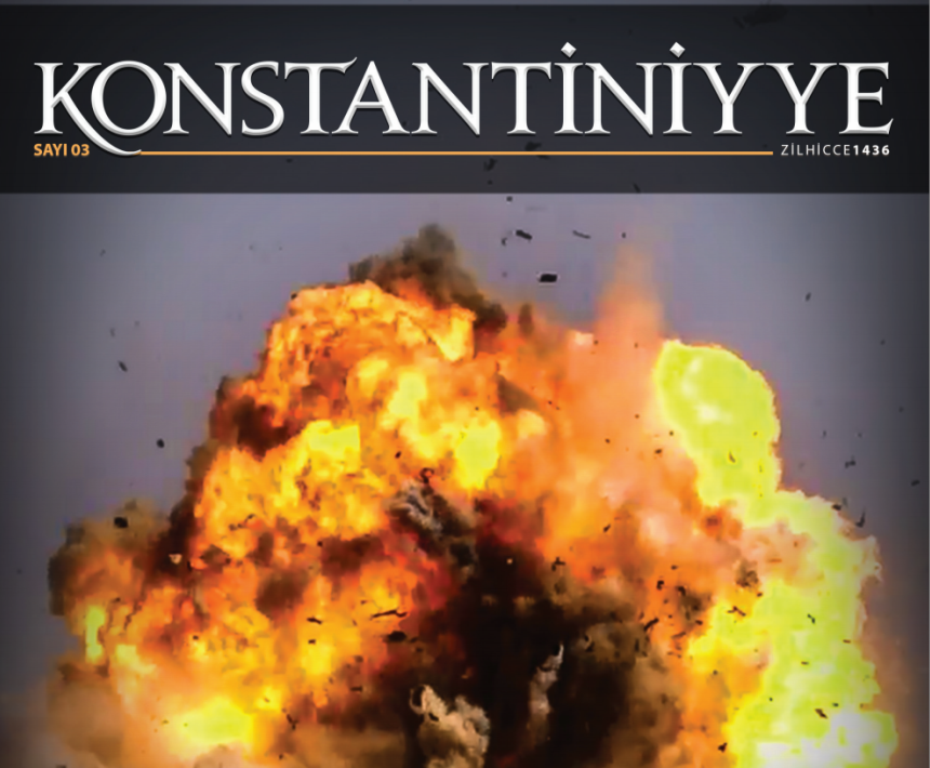Calling all suicide bombers

The radio station operated by the terrorist militia "Islamic State", which has been broadcasting regularly for the past few months in English, French, Russian, Turkish and Kurdish, is called "Al-Bayan". The Arabic term succinctly reveals the group's agenda, conjoining modernity and tradition to connote both an "announcement" and also spreading the word of the Koran.
The daily Arabic news programme, around seven minutes long and consisting mostly of war reporting, has followed the same pattern for months. A brief rendition of a jihadist song (nasheed), which praises the Islamic Umma (world community) and continues in the background as the news is read, is followed by reports of "successful" suicide attacks by IS members.
The radical Sunni station refers to them by the term "amaliya istishhadiya" (martyrdom operations), originally popularised by the Shia arch-enemies who are today at war with the IS: the pro-Iranian Hezbollah introduced the term in the 1980s.
The IS terrorist militia lets it be known that its suicide martyrs – "Istishhadiyin" – are deployed both offensively and defensively. Sometimes their bombs clear the way for combat troops to follow, or the bombers detonate armoured vehicles laden with explosives to slow down the advancing enemy.
To make sure daily messages from "Al-Bayan" like these do not get lost in the constant stream of information, the IS website periodically features a special report on its suicide bombings – a diagram for example shows 65 such attacks during October in Iraq and Syria.
Twenty-minute "martyr" farewells
Checking the veracity of such information is not easy, not least because the Arab media use various names for the suicide operations of the IS, which are in fact very numerous. What is striking is that the term "suicide" is always included, in pointed emphasis of the fact that this form of terrorism violates Islam′s prohibition of suicide, something Islamists like to gloss over.
For the media staging of its suicide bombers, the IS likes to make use of a genre already established three decades ago, perpetuating their deeds individually on video or at least in an extended photo sequence. But the competition is watching: rival terrorist militias, in particular the Syrian "Nusra Front", which is linked to al-Qaida, is also very productive in this respect.

Such rivalry has occasionally prompted farewell videos to swell to lengths of up to twenty minutes. Usually, the reading of the "will", which often segues into a hate sermon, is followed by a farewell scene as the perpetrator climbs into the vehicle and drives off to launch the attack. The final chord is then struck with the explosion scene, which is often shown repeatedly.
The pointing index finger is mandatory
Lately, however, the videos bidding farewell to IS suicide bombers have become noticeably shorter, probably due to their great proliferation. The bombers are still permitted to appear before the camera as individuals wearing their own, very diverse, clothing. But they are clearly asked to play it up a bit.
An underage Arab, for example, holding a small Koran in his hand on his way to blowing himself up with belt full of explosives, acts the role of the devout and contemplative believer before uttering a torrent of jihadist slogans and threats. For a Tajik car bomber, by contrast, two sentences in broken Arabic must suffice, muttered out of the window of his prepared tank car, before he proceeds to his death.
Recently it has apparently been decided that suicide attackers should raise their right hand with a pointing index finger at some point during the farewell video – signalling the number one, a symbol for the unity of Islamic faith and the unity of the jihadists. The Palestinian Hamas popularised this gesture years ago, but not wanting to be linked with the IS under any circumstances, they have now reverted to the traditional victory sign.
Welcome to the "caliphate"
The IS also glorifies its death terrorists in four non-Arabic magazines. Probably the best known among them is the English "Dabiq", named for a town in northern Syria where the doomsday battle will ostensibly take place against the "infidels". The magazine evokes apocalyptic themes and a supposed global war of civilisations, which the IS claims to be spearheading on the Muslim side.
Again and again, the suicide attack is highlighted as the preferred weapon, as it also is in the French counterpart "Dar Al-Islam" (House or Dominion of Islam), a magazine designed to teach Francophone Muslims where they supposedly truly belong. They are especially welcome to take part in the IS "caliphate" as suicide soldiers: by the third of six issues of "Dar al-Islam" currently published, a death driver from France was already being extolled, sitting at the wheel of his vehicle and smiling.
Similar to "Dar Al-Islam", the latest, third issue of the Turkish IS magazine, "Konstantinyye", features on its cover a massive explosion, under the heading "Martyrdom operations are allowed and legitimate".

Ataturk denigrated as an idol
The magazine's title was chosen cleverly, because "Konstantiniyye" is the Ottoman name for Istanbul, thus recalling the Islamic conquest of Byzantine Constantinople and its conversion into the capital of the Ottoman Caliphate. The publishers thus echo the way Erdogan's AKP has glorified this victory over the East Roman Christian Byzantine Empire in its neo-Ottoman discourse for the past several years. Ataturk is however consistently vilified in "Konstantiniyye" as a "kafir" (infidel) and "tagut" (idol).
This division between good and evil also colours the rhetoric of the Russian IS periodical, "Istok" (source, origin), in which suicide attacks are likewise a featured theme. The decision by Russian, Caucasian and Central Asian sympathisers to carry out an "Istishhad Operacja" is not only exalted here as the culmination of an almost mystical enlightenment – to dispel any last doubts, it is interwoven with the narrative of an intimate camaraderie, which these non-Arab mujahedeen then believe to be typical of IS.
Joseph Croitoru
© Qantara.de 2015
Translated from the German by Jennifer Taylor